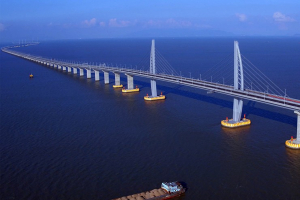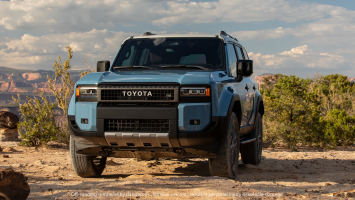Top 8 Superweapons Built By The Nazis
The Nazis developed a variety of unusual weapons throughout the Second World War, some of which were used in battle and others of which were never developed ... read more...beyond the concept stage. Some of these weapons used technology that very few people had ever seen before, making them truly terrifying. Whether their victims were soldiers on the battlefield or civilians in the cities and towns, they instilled fear into the hearts of everyone they encountered. Since the majority of these weapons were designed in a revolutionary manner, the World War II winners improved on their concepts to create the fathers and grandfathers of the weapons systems we use today. And while some were without a doubt astounding and impressive, others were downright bizarre. In this article, Toplist introduced to you some superweapons built by the Nazis.
-
The Me-262 "Schwalbe" (Swallow) was the world's first jet-powered fighter aircraft, and it was arguably Hitler's most visible Wunderwaffe aircraft. It would have seen active service earlier in the war, but problems with metal quality, the engine, and political interference delayed its deployment until April 1944. The Me-262 was so superior in the air that the Allies could only counter it by destroying it on the ground, as well as during take-off and landing. Because of its incredible rate of climb compared to prop-driven fighter planes at the time, the Me-262 was nearly impossible to intercept once airborne.
If the Me-262 had been introduced earlier in the war, it could have had a significant impact, but in reality, far too few were built. The Allied bombing had a disastrous effect on Germany's ability to source quality materials, and it significantly slowed production time. As a result, Germany decided to concentrate on producing aircraft that were simpler to produce.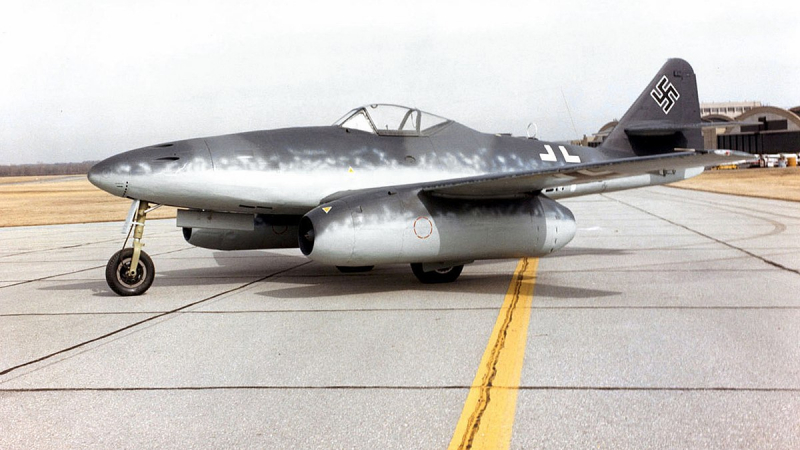
Wikipedia 
VS Battles Wiki - Fandom -
It went by several names. The Germans referred to it as the Kirschkern (Cherry Stone) or the Maikäfer (Maybug), while the British referred to it as the "Buzz Bomb" and the "Doodlebug." The V-1 was known as the "Fi 103" by the Reich Aviation Ministry, but whatever name it was given, it was a terrifying weapon. It was the first of Nazi Germany's so-called Vergeltungswaffen, or "Vengeance Weapons," designed to strike terror into the hearts of the enemy. The V-1 cruise missile was the world's first.
On June 13, 1944, one week after the Allied landings in Normandy, the Nazis launched their first V-1s at London. Over a hundred V-1s were launched every day at first, but as the Allies advanced eastward, the V-1's limited range meant that targets had to move eastwards as well. V-1s were launched at targets in the Netherlands and Belgium as England fell out of range, and this continued until the end of the war.
Barrage balloons and anti-aircraft guns were used to defend against the V-1, but one method was effective, albeit extremely dangerous. Fighter pilots could use the wing of their aircraft to flip the V-1 upside down in flight, confusing its guidance system.In the end, the V-1 was successful because it was economical for Germany and made Britain focus a large portion of its war effort on defending against them. Thousands of V-1s had been launched by the end of the war.
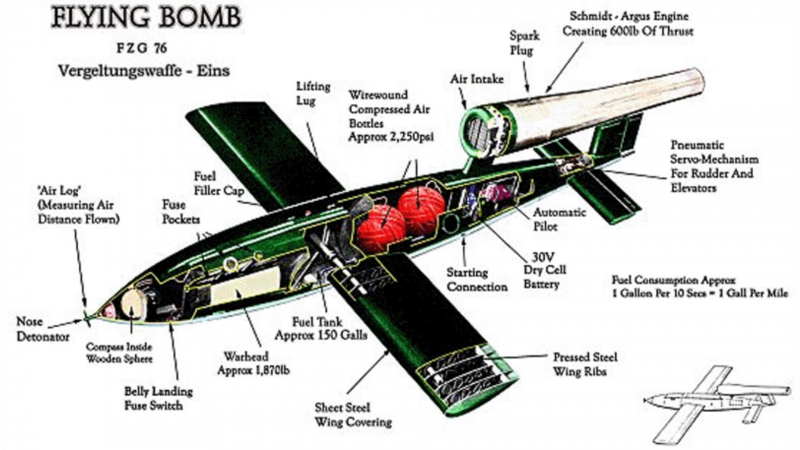
Mpoweruk.com 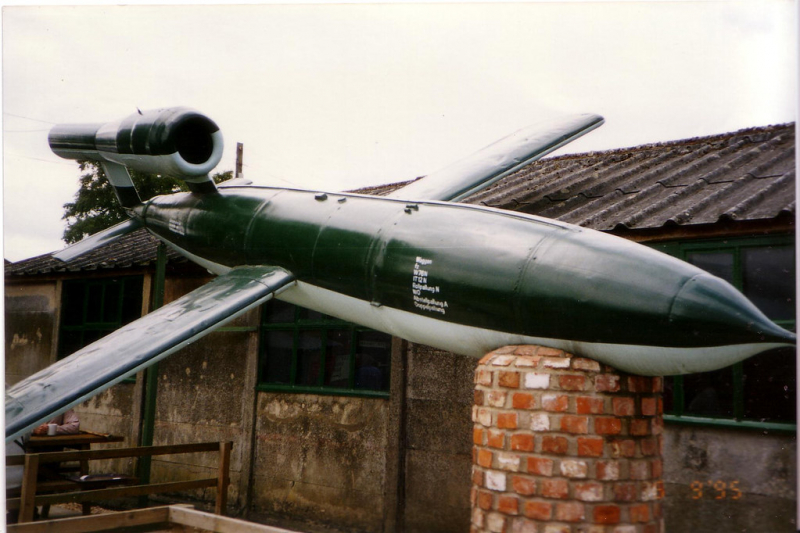
Flickr -
The Me-163 was an extremely daring weapon experiment. This Wunderwaffe was extremely dangerous to fly, in part because it was a flying rocket with a skid for landing gear rather than a true jet aircraft. The wheels would detach during takeoff, and landing would require the pilot to use a skid to land the plane on the runway.
The dangerous operation of this aircraft was exacerbated by the highly volatile rocket propellant known as "T-Stoff," which resulted in numerous mishaps, including the death of Oberleutnant and fighter ace Josef Pöhs.
Because the aircraft was rocket-powered, it could reach incredible speeds that were unheard of at the time. It was the first piloted aircraft to exceed 1,000 kilometers per hour, and its current record speed is 1,130 kilometers per hour (700mph). In comparison, the P51-Mustang, a very fast prop-driven aircraft, had a top speed of 440 miles per hour (708kph).
Only 370 Me-163s were ever built, and despite their revolutionary design and incredible speed, their performance was disappointing. Ten aircraft were lost in combat, whereas the Me-163 shot down between nine and eighteen Allied planes.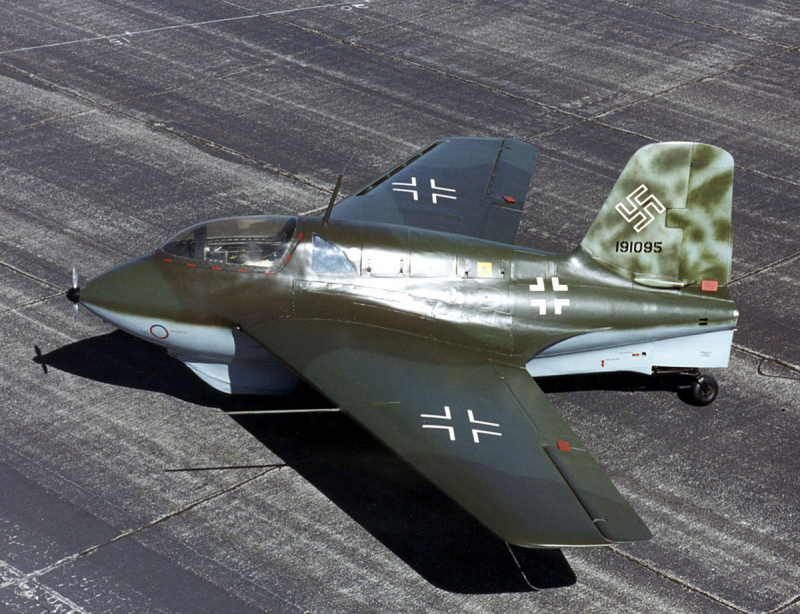
Wikipedia 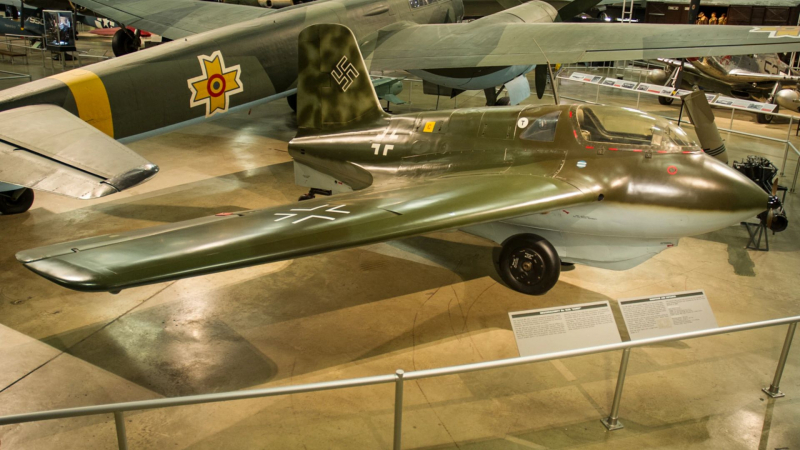
National Museum of the USAF -
The Schwerer (heavy) Gustav was the largest artillery piece ever built. It was a railway gun specifically designed to destroy French forts along the Maginot line. The gun was not ready in time for the campaign against France, but it did see action later in the war, during the Siege of Sevastopol, where its 800mm (31-inch) shells proved extremely effective. It destroyed a munitions depot 30 meters (98 feet) below ground during the siege.
Fortunately for the Soviets, Sevastopol would be the only place where Schwerer Gustav would come to their aid. The gun was transported to Leningrad to take part in the siege there, but before it could fire, the Soviets had already lifted the siege.
The entire piece of artillery weighed 1490 tons and measured 47.3 meters (155 ft 2 in) in length. 250 people were needed for the 250 different tasks involved in getting the gun ready to fire. This required constructing the gun's track, digging trenches, and assembling the weapon.A second gun, "Dora," was ordered in addition to Schwerer Gustav. When the artillery was ordered in the past, the Krupp company, which manufactured the gun, never asked for payment for the first piece. As a result, Schwerer Gustav was given to the Wehrmacht at no cost. Despite its impressive appearance, this Wunderwaffe did not see much action.
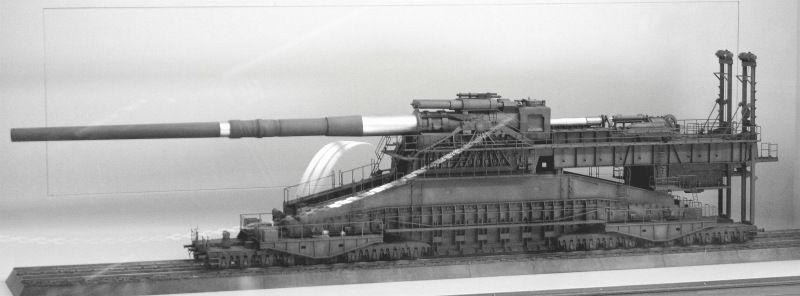
Wikipedia 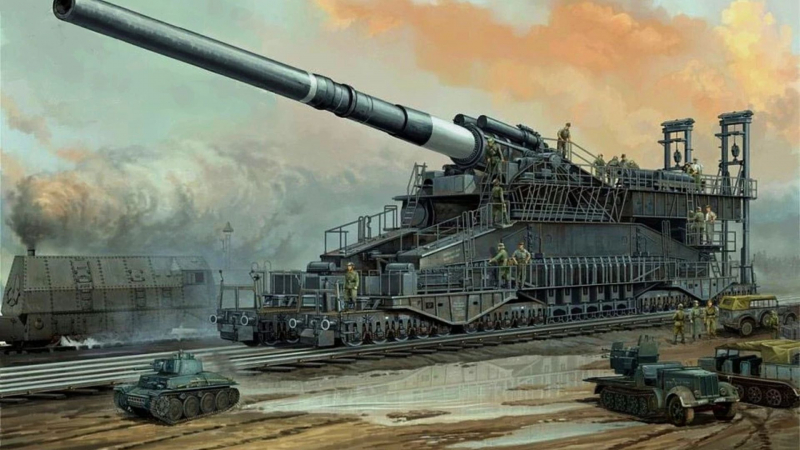
When the Cold Breeze Blows Away Wiki - Fandom -
The mouse, or Maus, wasn't at all small. The largest fully enclosed armored fighting vehicle ever constructed, it was. If the Maus had ever been used, it would have been a terrifying sight on the battlefield, measuring 33 feet (10.2 meters) in length and 207 tons in weight. Only two of the five that were ordered were ever built.
The 128mm gun was put through tests in late 1944, and it was discovered to be capable of destroying every armored vehicle used by the Allies, with some tests succeeding at 3,500 meters (11,500 feet).
This Wunderwaffe, on the other hand, had significant flaws. Building an engine powerful enough but small enough to fit in the vehicle was difficult, and the fastest speed ever achieved during testing was 14 miles per hour (22 kph). In addition to its slow speed, the vehicle's weight made crossing most bridges impossible. As such, the tank was designed to be driven through rivers using a snorkel and was allegedly capable of submerging 26 feet (8 meters).
Before the Maus could be used in battle, the war came to an end. The prototypes were taken by the Russians, who then tested them there. The second tank's turret was attached to the hull of the first tank. The last surviving car is kept at the Kubinka Tank Museum outside of Moscow.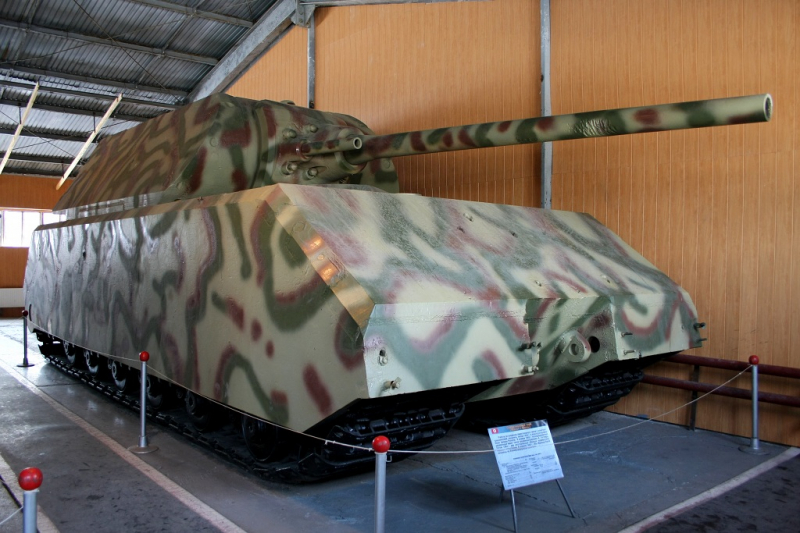
Wikipedia 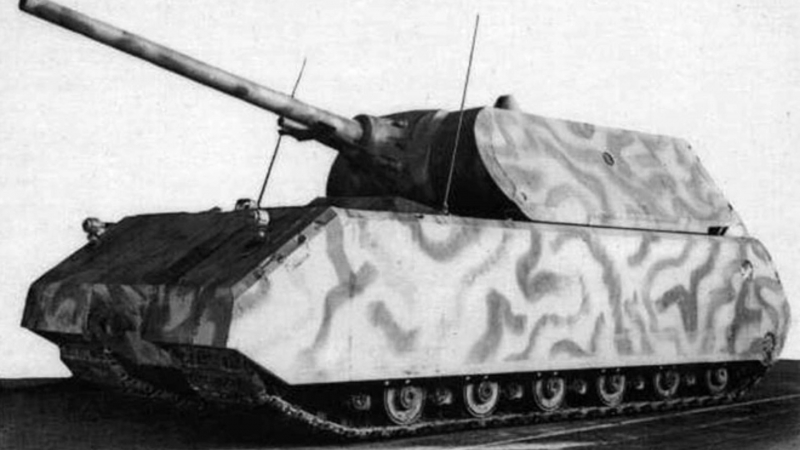
Zing News -
The project was created in response to Hermann Goering's request for a light bomber capable of carrying 1,000 kilograms for 1,000 kilometers at a speed of 100 kilometers per hour. As a result, the flying wing design accomplished more than its designers anticipated.
This machine, like many other German Wunderwaffe, never made it past the prototype stage. Only three aircraft were built, and none were ever used after testing.
After the war, tests on mock-up versions of the Ho 229 revealed that the aircraft did, in fact, have a smaller radar cross-section than other conventional aircraft at the time, though the difference was not significant. Although tests revealed only a moderate improvement in radar cross-section size, being 80% of a modern prop-driven aircraft, the Horten's speed, combined with this reduction, would have made intercept nearly impossible.
Reimar Horten asserted that he had plans to cover the plane in radar-absorbing dust, but this was decades after the war, at a time when media coverage of stealth technology was just beginning. His claims continue to be disputed by historians. The aircraft did, however, absorb radar waves, which served as the foundation for America's own stealth program.
The third prototype's central chassis with engines and cockpit, which is kept at the Smithsonian National Air and Space Museum in Washington, DC, is the only piece that has survived.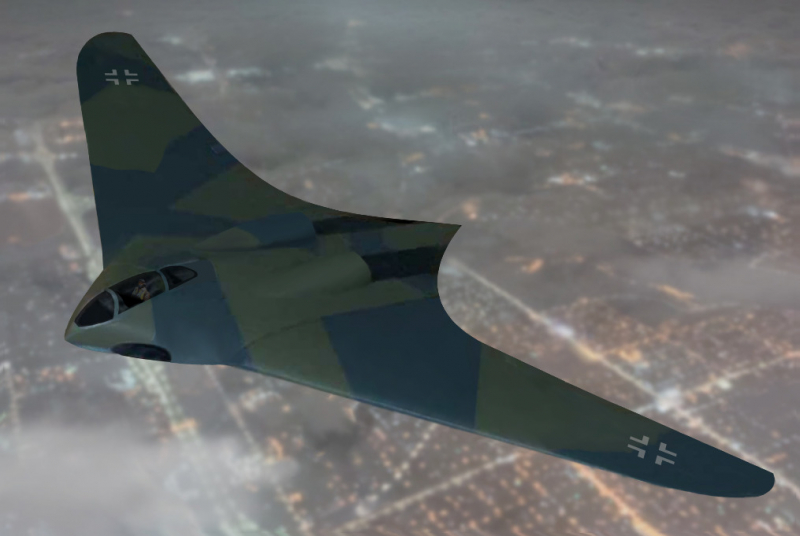
Wikipedia 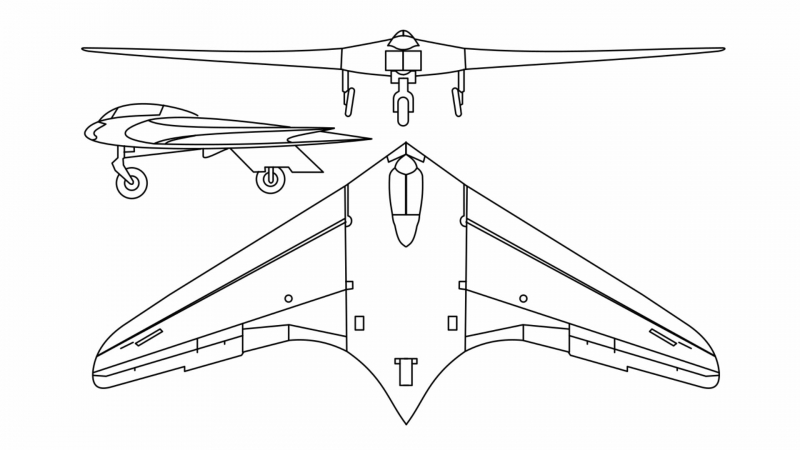
Wikipedia -
The V-2, a replacement for the V-1 and the first long-range guided ballistic missile in history, was possibly one of Hitler's Wunderwaffe's most well-known weapons. Hitler developed the V-2 as retaliation for the Allied bombing of German cities, and they started dropping on Allied cities in September 1944. During the course of the war, more than 3,000 were launched, and over 9,000 civilian targets perished. However, it took the lives of forced laborers the most. In the process of making these weapons, over 12,000 prisoners and workers from concentration camps perished.
The guidance system posed a particular challenge for the Allies because it made use of intricately designed gyroscopes that were impossible to jam. The British initially believed the weapon's guidance system used radio but attempts to jam it proved fruitless because it descended on its targets at a speed of almost Mach 3.
The V-2 was unstoppable because it was moving at supersonic speeds. Without any prior sound, it struck without warning. It was extremely challenging for Allied bombers to locate and neutralize them because they were launched from mobile platforms that could be well concealed in dense forests.
The Soviet Union and the Western Allies competed to reclaim as many V-2s and German scientists as they could after the war. Wernher von Braun, the program's lead scientist, was captured by the Americans and later helped develop the first rockets used in the country's space program. The Soviets also advanced their space program by using V-2 technology. The first intercontinental ballistic missile ever developed, which was a direct descendant of the V-2 and created by German scientists working for the Soviet Union, put Sputnik into orbit.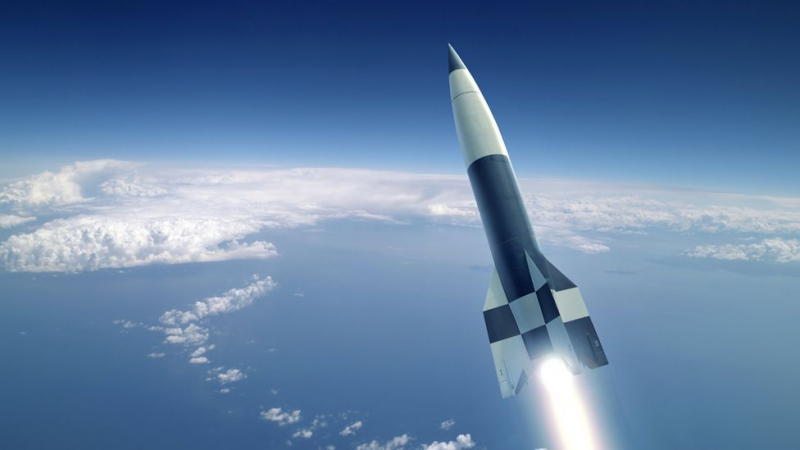
BBC 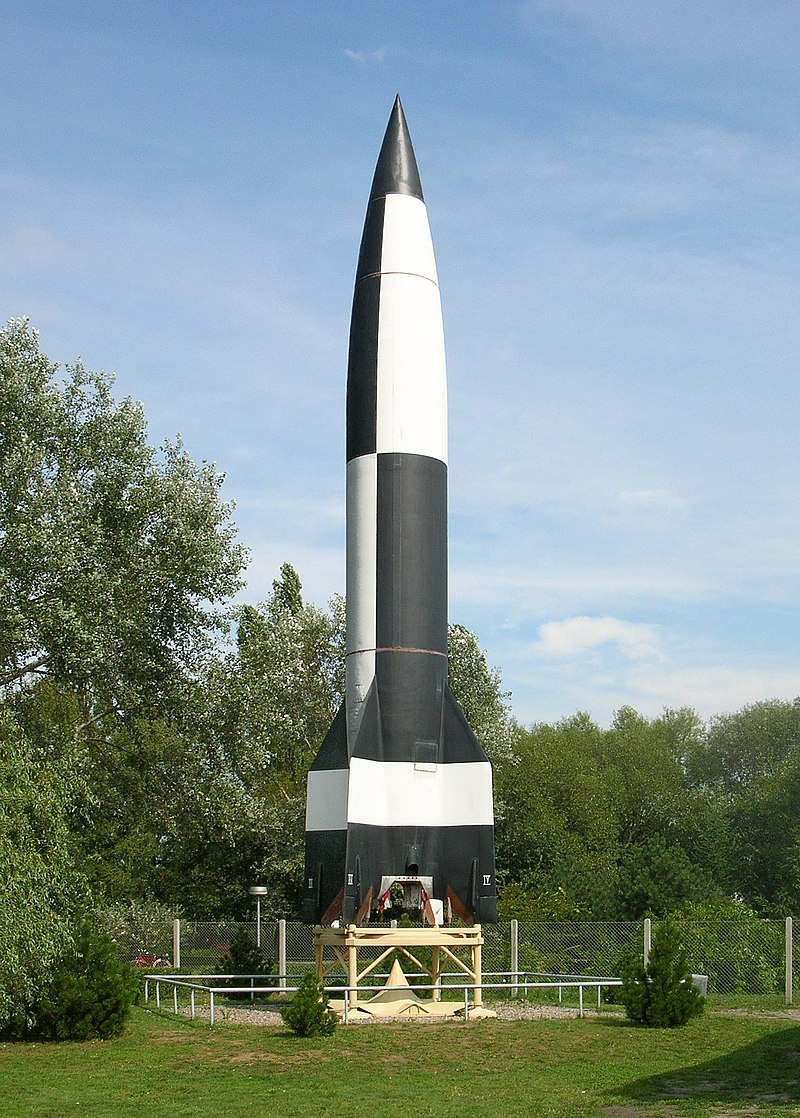
Wikipedia -
Although it was never developed past the concept stage, the design's sheer audacity makes it deserving of a spot among Germany's Wunderwaffe.
More than a tank, the P. 1000 Ratte was a vehicle. The vehicle, which weighed more than 1,000 tons, served as a mobile battle platform rather than a tank. The vehicle was built with four 128mm anti-aircraft guns for defense and two 280mm gun platforms. The entire apparatus would be run by 20 to 41 soldiers.
Albert Speer canceled the project before any prototypes could be built, despite the fact that Hitler was enamored with the idea and could see no use for such an absurdly large tank. Of course, this list only represents a small portion of the Wunderwaffe that the Nazis actually used or imagined. Some of the designs were utterly absurd, others were science fiction that would take decades to build, and still, others were downright lethal. If there is one thing we can be certain of, it is that the vicious and unstoppable Nazis did not lack originality.
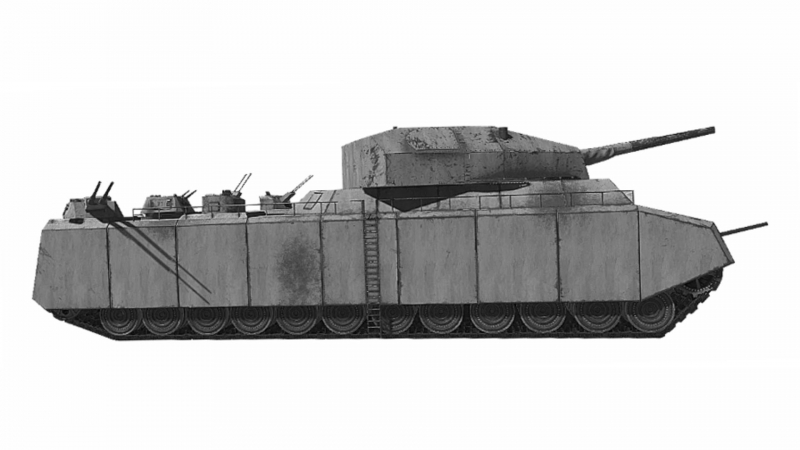
Wikipedia 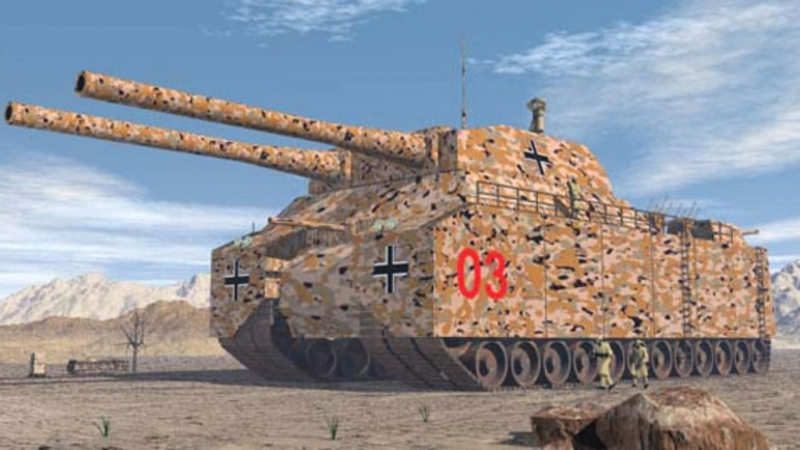
Genk














